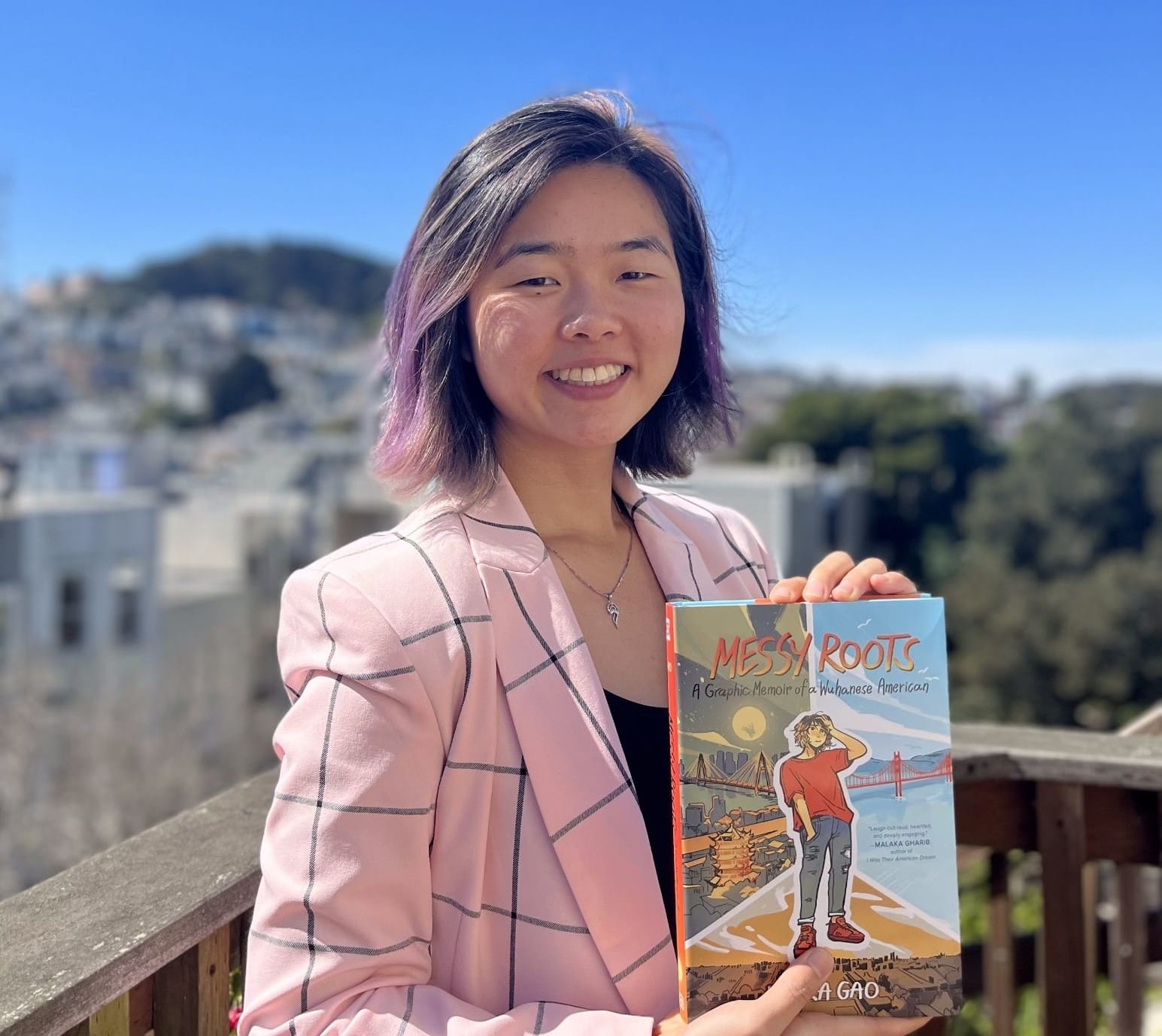When Laura Gao W18 immigrated to Texas from Wuhan as a child, the Chinese city could hardly be considered a household name. That of course changed with the onset of COVID-19. Looking to combat anti-Asian racism stemming from the virus’s spread, Gao took to Twitter in March 2020 to publish a short comic titled “The Wuhan I Know,” in which she introduces foundational facts and history about the city. (Did you know that, with roughly 11 million people, Wuhan boasts a population larger than that of New York City?)
The comic quickly went viral in the Twittersphere and has since inspired Gao’s debut graphic work, Messy Roots. Following the memoir’s publication last month, Wharton Magazine connected with Gao to discuss Messy Roots’ main themes, the author’s love for drawing, and what she’s working on now.
Wharton Magazine: What are the key messages you hope readers take away from Messy Roots?
Laura Gao: Messy Roots is both a love letter to my hometown and to all the wandering young Lauras out there looking for a safe place to call “home.” Everyone’s search for identity and home is different and complex. And that’s okay! By letting your voice shine above the doubts, you’ll realize the right people and places will naturally gravitate toward you — no matter how messy your roots are.
Wuhan is also a beautiful place with such rich history and culture, mouth-watering food, and friendly people! Each time I visit my hometown, I fall in love with something new: waking up to smells of reganmian from the street stalls, seeing the beautiful Wuhan skyline reflected on the Yangtze River at night, feeling the cool countryside breeze on my face as I sneak out with my cousins. I hope people will visit and love it for themselves soon!
WM: Having evolved from your viral web comic, Messy Roots is deeply personal, touching not only on your memories of Wuhan but also on topics such as family relationships and your experience growing up queer. Why was it important to explore those aspects of your life in the expanded work as well?
LG: When “The Wuhan I Know” went viral online, I received a heartwarming note from a mother thanking me for creating something she could share with her two young Asian American daughters to help them feel proud of their identity despite all the anti-Asian hate going on — and asking me to share more about myself. At first, I was elated but hesitant. Was a simple, 10-panel comic enough to accomplish such a feat? Furthermore, was I, a 23-year-old still playing identity tug-of-war with my poor therapist, a qualified narrator? I wanted to scream at the screen, “But I can’t even use chopsticks currently!”
However, as I started writing a response for these girls, I realized I couldn’t talk about my hometown and anti-Asian racism without unraveling the beast trapped inside my old wounds. This beast would later become the roar behind my words in Messy Roots.
My story stems from my parents’ immigration story and my grandparents’ story of survival in Wuhan. Asian culture is deeply intertwined with familial bonds and expectations, and in my family’s case, conflicts with my lifelong relationship with my queerness and artistic pursuits. So to write about one is to include the nuances of all these intersections.
WM: What is your favorite scene in the memoir, and why?
LG: The scene at the Chinese Students’ Association cultural show at Penn was the hardest yet most rewarding scene to retell. (Skip ahead if you’re allergic to spoilers!) After the Lunar New Year party in which I felt alienated for not being “Asian enough” while also realizing some ugly biases of my own, the CSA show was the first time I confronted that inner beast inside me that questioned every move I took on my identity journey. The scene doesn’t end with me magically curing my insecurities. Instead, I stand up to the beast by admitting I don’t yet know the “right” answer, but whatever it is, it’s not for anyone else to judge. By doing so, I finally set myself free from external expectations and took the first step to living authentically as myself.
WM: What has been the response to Messy Roots so far?
LG: The response has been amazing. It has already achieved several distinctions through the American Booksellers Association, including a spot on the Indie Bestseller List, and I’ve gotten countless notes from readers about how much it has made them cry, laugh, and appreciate their own journeys. One queer teen said it helped her come out to her parents, and another traded family recipes of Wuhanese foods with me! Please keep the notes coming.
WM: Drawing seems to have been an important part of your life long before the web comic. What do you personally get out of creating comics?
LG: Drawing has always been a form of expression and cathartic release for me, especially growing up in a tumultuous environment where expressing emotions was discouraged. After I graduated from Penn in 2018 with a degree in business analytics, I worked in tech as a product manager. Every night after work, I’d be mentally exhausted and unable to conjure up much creative energy. However, I’d push myself to doodle a short 10-minute comic of a memorable moment from that day. Soon enough, I had a comics diary that I could not only decompress into, but also take pride in how far I’d come when I reread it.
WM: What’s next for you?
LG: I’m working on my second YA graphic novel with HarperCollins. You can get sneak peeks of my process on my social media accounts (@heylauragao on Twitter and Instagram). I’m also excited to travel around the world again and hope China opens up soon so I can see Wuhan once more.

























